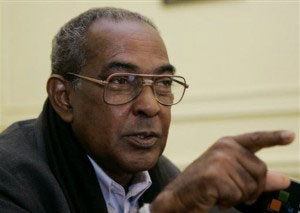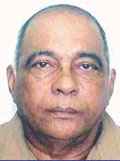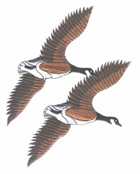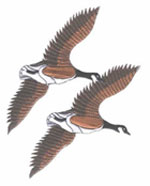This story tells of the downing of a Cuban helicopter with 15 people on board, commanded by the pilot Emilio González Rivas, 17 May 1978 in a confrontation with the FNLA:
Under the command of a pair of helicopters that arrived in the afternoon, the town known by the name of Aldeia Viçosa, in northeast Angola, more than 200 miles from Luanda. Fogueton Major, the then military head of the Angolan region, had gone to the Observation Post of their artillery.
The representative of Aviation Regiment (Cuban) to the remote Angolan First Lieutenant Jorge Luis, decided to move in the first helicopter to the position mentioned above. The second helicopter had to remain in Aldeia Viçosa awaiting instructions.
We flew to Mary Adelaide, another town nearby, where we found the lookout. At this point we entered the second helicopter.
From there, the enemy positions were visible quite clearly. Noted the actions of a mortar, part of the FNLA, who harassed FAPLA Cuban positions.
Major Fogueton (Angolan), made the decision to hit the enemy using helicopters, although the Cuban military commander, Colonel Harry Villegas (Pombo's guerrilla Che Guevara), was of the opinion that it should use the artillery.
 |
Harry Villegas, a former guerrilla and Cuban military
We gave the Angolan impresiónde that did not like the observation of the Cuban leader and based the decision claimed that only he were 29 cannons, which corresponded to the combat readiness of the unit in question. It was at that time that we learned of the events in Zaire, but without the possibility of reflection:
Luanda, May 15, 1978 (PL) .-
The RPA stated that it is completely unrelated to any movement of the elements in Zairian armed insurrection against the government of Mobutu.
The RPA noted that the areas designated as a place of confrontation are not located on the border with Angola.
Lusaka May 17, 1978 (PL) .-
The British foreign secretary, David Owen, told the parliament that there is no evidence from which foreign participation in the fighting taking place in Zaire.
We should not, never have accepted the plan to hit the front, an enemy who was aware of our position and certainly had drawn up plans to counter our presence.
The leading helicopter attacked the mortar position, passing over the front line to 400 feet high while the second was to provide the necessary coverage flying at 800 meters.
In what was seen flying over the front of the enemy, we heard that we were making shots.
We ordered firing infantry weapons, the staff was in the cargo cabin.
The second helicopter, instead of maintaining the high coordinated, remained at the same level helicopter flight leader.
We assumed that by going to a distance of one kilometer, Emilio Gonzalez and Juan Valdespino copilot, the crew of the second helicopter, could have appreciated the place from where the shots came from and that's why we made the question of rigor, and to receive affirmative answer we command into battle and use the rockets.
Leaving the combative route, we saw a flash on the left side of the helicopter Emilio, between the inner edge of the block and tank rocket fuel left, completely above the left main wheel.
Emilio answered yes to our question of whether he knew it was on fire, so we ask you to land on the first platform to find. Emilio But the helicopter did not come into auto-rotation *, which is right for this type of emergency, but started to make money at.
Agony lasted six minutes because apparently Emilio's indecision allowed the forces and fires claimed that the companions who were inside the cargo would be forced, by the flames, to move towards the front cabin load, causing instability of the helicopter until, pressured by the flames, many of those trapped in that cabin decided to skip the unit before burning them alive. We saw three of them holding hands, projected into space.
It was like a horror movie in widescreen and full color. Just the smell made us think it was real, we were not in a cinema. After four or five minutes, Emilio made an approach to a platform at the peak of a mountain, standing beneath it.
Immediately appreciate the uncontrolled flight parameters as, dashed into the ground in a ravine. Three times we landed to find our classmates, but the intricacies of the forest in these places, prevented any rescue attempt.
In the penultimate time that we landed on the cusp of one of the elevations closer to the disaster, Colonel Harry Villegas, who was aboard our helicopter, ordered the infantry squad (nine men of his escort) , which landed and reached the place where in that very moment the rockets were exploding helicopter shot. The squad leader hesitated to notice, he bailed out Villegas shouting something like, "all me" and disappeared down the slope.
Realizing the tremendous responsibility we should take, if any eventuality to happen Villegas, ordered the copilot (Oscar Machado Hernandez) Villegas to bring back to the helicopter, at any cost. The enemy could attack our position with mortar fire and if we saw the need to take off, leave them isolated and on the other side (the position of our troops) of river Dange.
At this point, Machado had managed to communicate by shortwave radio, with Marcos Luanda and Cairo, the Chief of Staff of the Air Regiment was trying to give us support combat aircraft.
The planes flew over us and we saw them, but they never kept us in sight. The poor visibility prevented them from appreciating the terrain features. However we felt protected and grateful. At least we knew we had company.
Time to make the decision to withdraw from the scene. Night was falling and there was only the reserve of fuel needed to return to the aerodrome of Negage, when from the air and on the final pass on the scene, we caught sight of Rodolfo Castillo, the cockpit crew and the unfortunate soldier FAPLA.
With the fractured clavicle injury, profound in the back of the head, Castillo, had achieved the top of the lift and made signs with a sweater (t-shirt) white. We managed to land and rescue him, the soldier FAPLA however, never reached the helicopter. Castillo noted later that, after separation in the last stretch, I had not seen since.
The next day we arrived at the disaster scene rather late, about 11:00 hrs. Clouds, flush with the tops of the highest mountains, would not give us the opportunity to locate the position and least attempt a landing in such weather.
Finally we recover the bodies of our comrades, tortured almost all (those who still were alive on arrival FNLA troops) and those who were already dead they had been severed genitals. The bitterness and hatred were of incalculable dimensions.
The war breaks out the baser instincts of human beings.
The commission investigating the facts sought to present the demolition crew Emilio, as an accident, resulting from a mistake of driving technique, what we are categorically opposed.
This commission was composed of Col. Ernesto de la Paz Palomo (does not like being called by the second last name), aviation inspector hunting **, Lt. Col. Miguel Luna, chief engineer for aviation and helicopter Lezcay Lieutenant Colonel, Chief of the Laboratory of Aviation Medicine.
In the early hours on 19 May 1978, the second day of the disaster, we were writing the report of the facts when a loud explosion followed, over our heads, a roof collapsed in the place where we were. A Luna was bleeding face and gun in hand gesturing. Machado, co-pilot of the helicopter, shouting "mortars."
They had blown a fuse of mercury, by mistake, were in the office of Colonel Villegas in a can that was being used as an ashtray on one of the companions gathered there. This neglect will cost Villegas is a splinter lodged in one testicle. The smoker lost a finger.
The conclusions of the investigating committee did not agree with the criteria of the surviving crew. I must emphasize that this committee have been no helicopter pilot, or even a tactical training officer with such weapons. Only one engine and airframe engineer who unfortunately could not contribute more than their knowledge of the art.
The responsibility for the deaths of 15 comrades who were aboard the helicopter, he could be attributed to,
-Lack of information about the real situation of FNLA in the region.
-Lack of close cooperation between the different types of weapons present in the theater of military operations.
-Lack of knowledge of the region's military chief, regarding the role to be played helicopters.
Amazingly everything was in limbo. We were sent to operate under the command FAPLA, something really unusual, because according to the rules of the Chief of the Military Mission of Cuba in Angola (MMCA), such transactions were completely prohibited.
When Jose Antonio Alvarez Lachiondo, Head of Aviation Regiment, ordered us to subordinate command under the command of FAPLA, we were able to formulate an authorization signed by his own hand, but more than that, we had managed to send a representative aviation detachment front.
This document, plus the fact not directly head of the operation, served to make the rope would not break their weaker side, although we know, who later became Chief of the DAAFAR Troops in Cuba, Major General *** Ruben Martinez Puentes Brigade (then sub-captain), who was on the RPA in front of a Control Committee, tried unsuccessfully to pin responsibility for the catastrophe.
 |
Brigadier General Ruben Martinez Puentes
Marcos Cairo (Head of EM Aviation Regiment), in confidence, we Bridges said Martinez had asked if we'd not be apendejado.
After the death of Emilio, after the confession of a prisoner would allow us to detect a base of operations for the FNLA, the Cuban military command planned a response operation.
* The auto rotation is part of any of the different types of emergencies in helicopter aviation. It translates into a rapid descent, during which the pilot must choose a platform and proceeding to land on it.
** This officer, a pilot "hunt", 10 years later became head of a helicopter regiment, without ever having flown in one of them.
*** Ruben Martinez Puentes is the same that led the downing of the planes of Brothers to the Rescue. "
(Testimony of Manchiviri reader. This piece is part of a book
Source laultimaguerra Blog site



